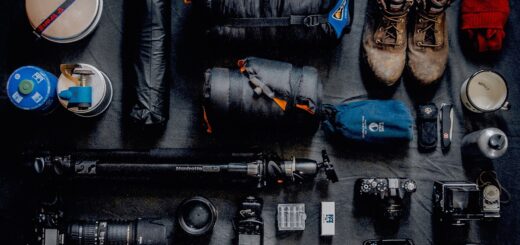The Rise of Mirrorless Cameras: Embracing the Future of Photography
In recent years, there has been a significant shift in the world of photography with the rise of mirrorless cameras. These innovative devices have quickly gained popularity among both amateur and professional photographers alike. Mirrorless cameras, as the name suggests, do not have the traditional mirror mechanism found in SLR cameras. Instead, they use electronic viewfinders to preview and capture images. This article will explore the benefits of mirrorless cameras, compare them to SLR cameras, and provide tips on how to use them effectively.
Difference between Mirrorless and SLR Cameras
One of the primary differences between mirrorless cameras, such as the Fujifilm GFX100S, and SLR cameras is the absence of a mechanical mirror. In a SLR camera, light enters through the lens and is reflected by a mirror onto an optical viewfinder, giving the photographer a real-time view of the scene. When the shutter button is pressed, the mirror flips up, allowing light to reach the image sensor and capture the photo.
On the other hand, a mirrorless camera does not have a mirror or an optical viewfinder. Instead, light passes directly through the lens and onto the image sensor. The electronic viewfinder of a mirrorless camera like the X-S10, displays a digital representation of what the sensor sees, providing a preview of the final image. This “what you see is what you get” feature allows photographers to make adjustments in real-time and see the effects of different settings before capturing the photo.

Advantages of Mirrorless Cameras
Mirrorless cameras offer several advantages over their SLR counterparts. Firstly, their compact and lightweight design makes them ideal for photographers who need to travel light or shoot in challenging conditions. Without the mirror mechanism, mirrorless cameras can be significantly smaller and more portable, making them a popular choice for street photographers, travel enthusiasts, and vloggers.
Additionally, mirrorless cameras often boast advanced autofocus systems. With the ability to use phase-detection autofocus directly on the image sensor, mirrorless cameras can achieve incredibly fast and accurate focus, even in low light conditions. This is particularly beneficial for capturing fast-moving subjects, such as wildlife or sports events.
Another advantage of mirrorless cameras is their silent shooting capability. With no mirror flipping up and down, mirrorless cameras operate silently, allowing photographers to capture images discreetly without disturbing the subject or the environment. This feature is particularly useful for wedding photographers, documentary photographers, and street photographers who aim to capture candid moments without drawing attention.
The Rise in Popularity of Mirrorless Cameras
Over the past decade, mirrorless cameras have seen a significant rise in popularity, with more and more photographers embracing this new technology. One of the main driving factors behind this shift is the continuous advancements in mirrorless camera technology. Manufacturers have been investing heavily in research and development, resulting in improved image quality, faster autofocus systems, and enhanced features.
Furthermore, the rise of social media and online platforms has created a demand for instant sharing of high-quality images. Mirrorless cameras, with their built-in Wi-Fi and Bluetooth capabilities, allow photographers to transfer images directly to their smartphones or tablets for quick editing and sharing. This seamless integration with the digital world has made mirrorless cameras an attractive choice for photographers who want to stay connected and share their work in real-time.
Mirrorless Camera vs SLR Camera: Which One is Right for You?
Choosing between a mirrorless camera and a SLR camera ultimately comes down to personal preference and specific photography needs. SLR cameras still hold their ground in certain areas, such as sports photography and professional studio work, where the optical viewfinder and extensive lens options are advantageous.
On the other hand, mirrorless cameras excel in areas such as travel photography, street photography, and video recording. Their compact size, silent operation, and advanced autofocus capabilities make them a versatile tool for capturing a wide range of subjects. Additionally, the electronic viewfinder of mirrorless cameras provides a more accurate representation of the final image, allowing photographers to have better control over exposure, white balance, and other settings.
Tips for Using Mirrorless Cameras Effectively
To make the most out of your mirrorless camera, here are some tips to keep in mind:
- Familiarise Yourself with the Electronic Viewfinder: Take the time to understand the features and settings available in the electronic viewfinder. Experiment with different display options, such as focus peaking and highlight warnings, to ensure accurate exposure and focus.
- Utilise the Customisable Buttons and Menus: Mirrorless cameras often offer a wide range of customisable buttons and menus. Take advantage of this flexibility to assign frequently used functions to easily accessible buttons, allowing for quick adjustments without taking your eye off the viewfinder.
- Invest in High-Quality Lenses: The lens is just as important as the camera body when it comes to image quality. Invest in high-quality lenses that suit your photography style and needs. Mirrorless cameras offer a wide range of lens options, including native lenses specifically designed for mirrorless systems.
Conclusion: Embracing the Future of Photography with Mirrorless Cameras
The rise of mirrorless cameras has revolutionised the world of photography, offering new possibilities and advantages over traditional SLR cameras. With their compact size, advanced autofocus systems, and silent shooting capabilities, mirrorless cameras have become a popular choice among photographers of all levels. Whether you’re a professional seeking portability or an amateur looking to explore the world of photography, embracing the future with a mirrorless camera can open up a whole new realm of creative possibilities.



















